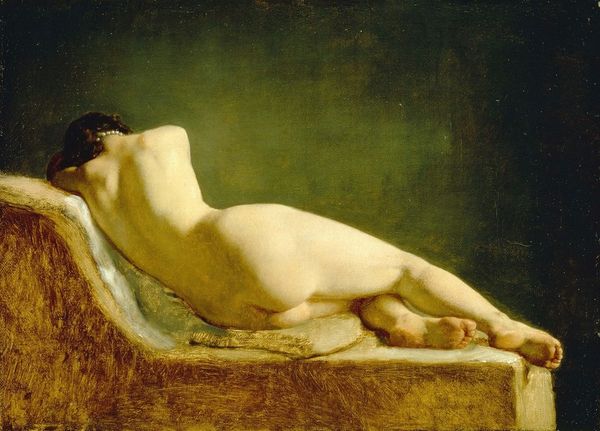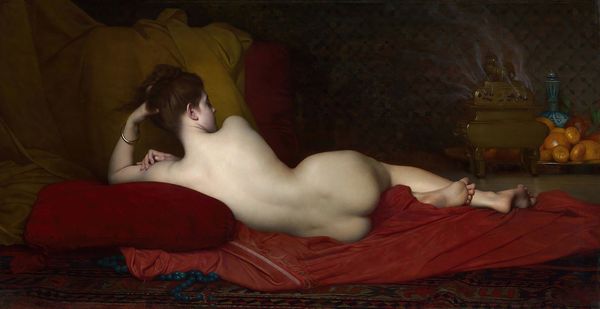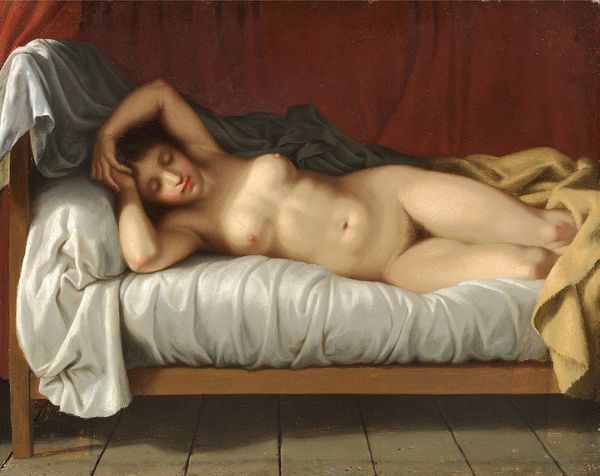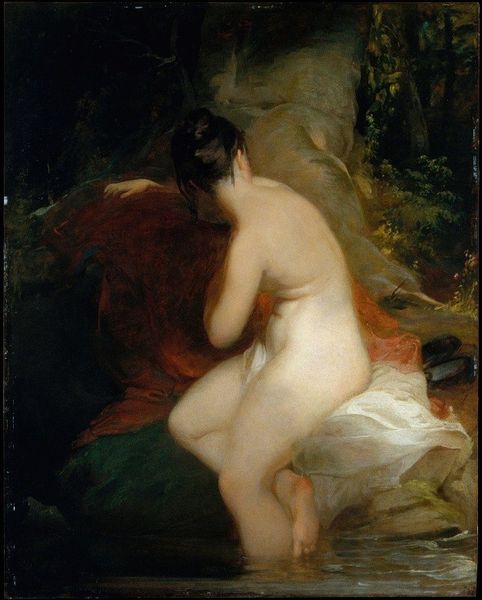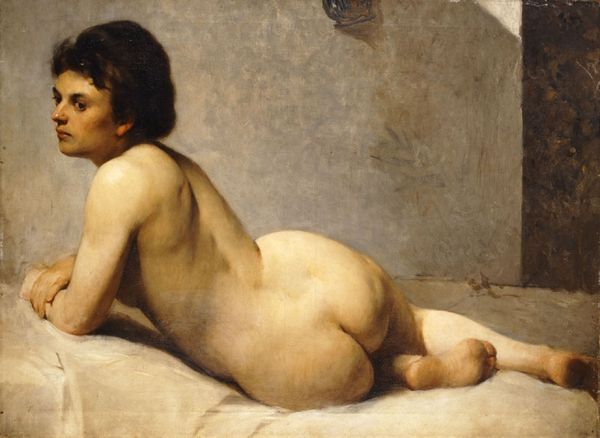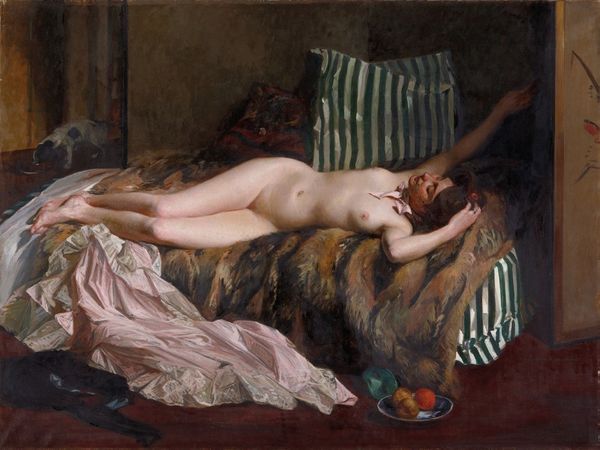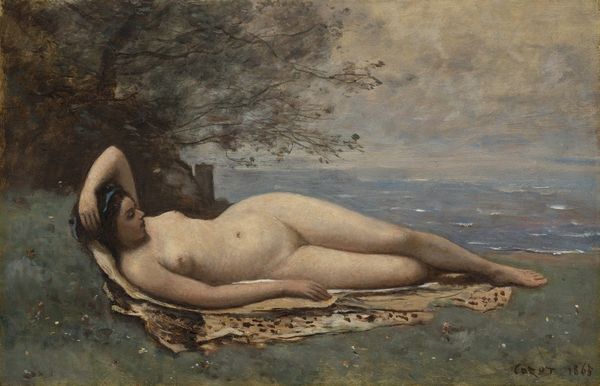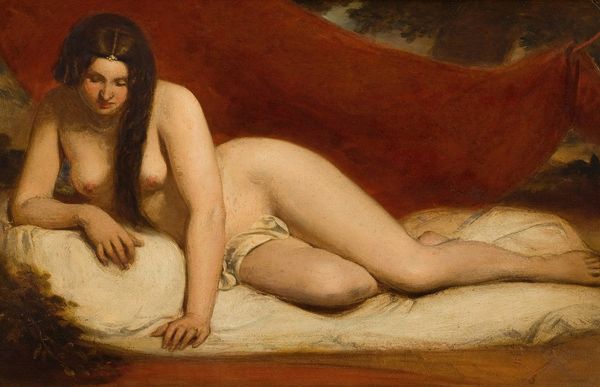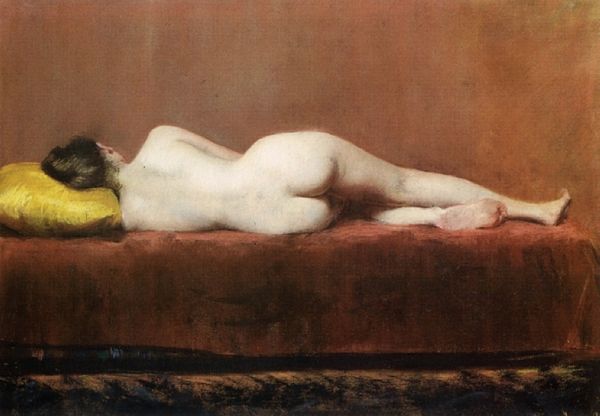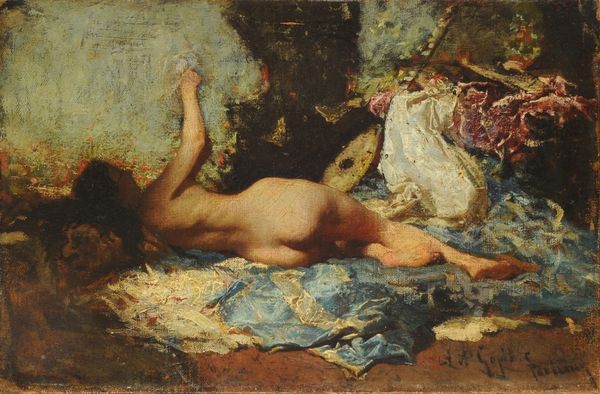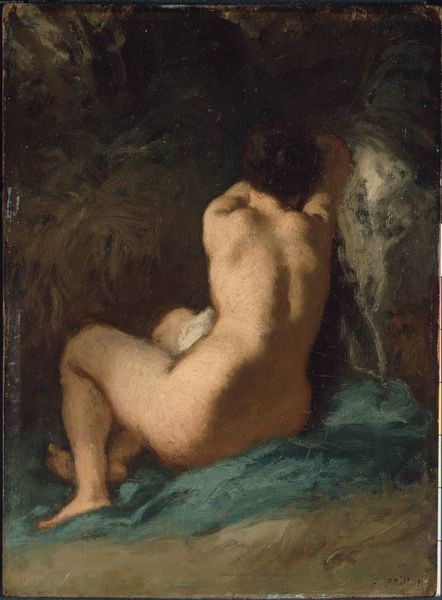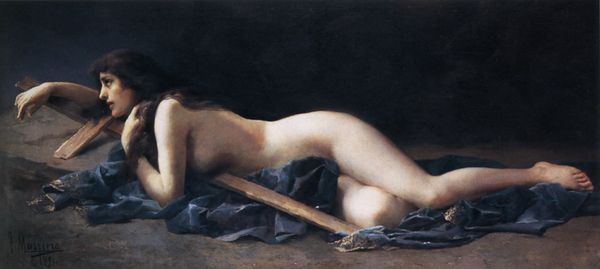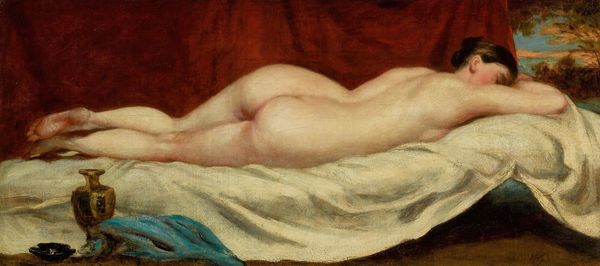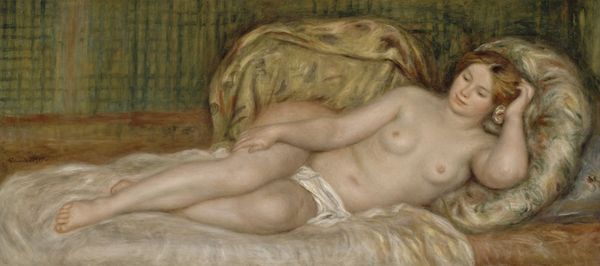
painting, oil-paint
#
portrait
#
figurative
#
painting
#
oil-paint
#
charcoal drawing
#
figuration
#
romanticism
#
academic-art
#
nude
Copyright: Public Domain: Artvee
Editor: So, here we have Isidore Pils' "Study of a Reclining Nude," painted around 1841 using oil paint. I’m struck by the contrast between the smoothness of the figure and the rather rough, almost unfinished background. How do you interpret this work? Curator: This piece invites us to consider the gaze and the power dynamics inherent in its creation. The female nude, a recurring subject in art history, here becomes a site for exploring 19th-century academic conventions, but also perhaps unintentional subversions. Think about the intended audience for this study and how it reflects or challenges societal expectations of women. Who do you think had access to such a painting? Editor: Probably men, primarily. Wealthy men, maybe artists themselves using it for reference... I hadn’t considered the audience. Curator: Exactly. The very act of depicting the female form in this way participates in a dialogue about objectification and artistic agency. But let's also consider the 'unfinished' quality. Could this also be read as the artist being uninterested in hyper-sexualizing his subject, leaving out seductive detail to concentrate on more pure figuration? Editor: That’s an interesting point. So you're suggesting it could be less about the male gaze and more about the artist's study of form and light? Does that, in a way, challenge the standard reading of nudes from that period? Curator: Precisely. It opens up space for questioning the dominant narrative. It urges us to analyze not just what is depicted, but who is doing the depicting, and for what potential purposes? Think about the Romanticism movement too— was the purpose aesthetic? Perhaps a pursuit of ‘beauty’ rather than sexuality? Editor: I see. By situating the artwork within its social and historical context, we start to understand its complex relationship to issues of gender, power, and artistic intention. It's not just a nude, it’s a statement - intended, or not! Curator: Precisely. Art serves as a window to reflect on the complexities of power and the society it comes from, regardless of how intended it may be.
Comments
No comments
Be the first to comment and join the conversation on the ultimate creative platform.
